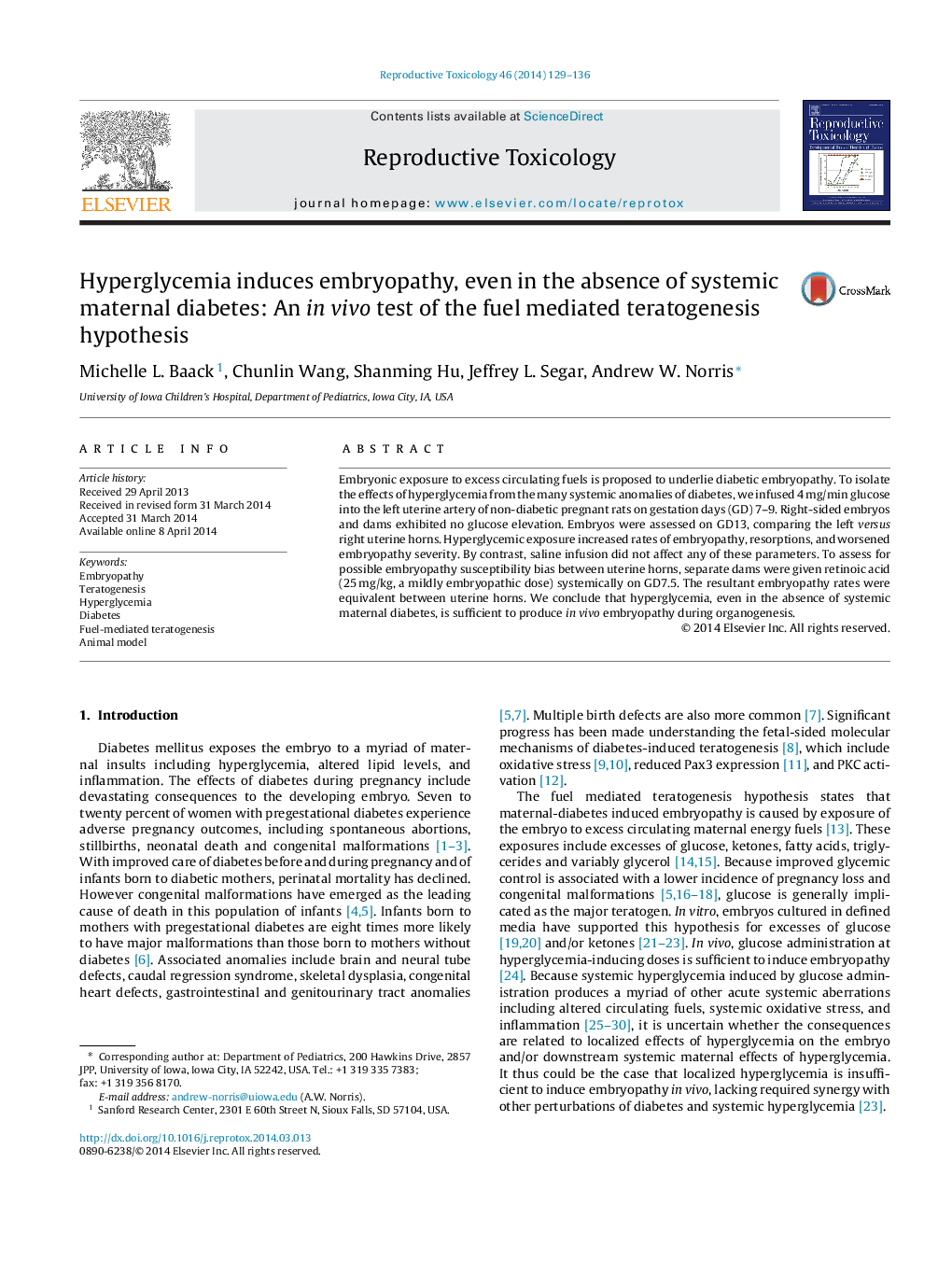| Article ID | Journal | Published Year | Pages | File Type |
|---|---|---|---|---|
| 5858907 | Reproductive Toxicology | 2014 | 8 Pages |
Abstract
Embryonic exposure to excess circulating fuels is proposed to underlie diabetic embryopathy. To isolate the effects of hyperglycemia from the many systemic anomalies of diabetes, we infused 4Â mg/min glucose into the left uterine artery of non-diabetic pregnant rats on gestation days (GD) 7-9. Right-sided embryos and dams exhibited no glucose elevation. Embryos were assessed on GD13, comparing the left versus right uterine horns. Hyperglycemic exposure increased rates of embryopathy, resorptions, and worsened embryopathy severity. By contrast, saline infusion did not affect any of these parameters. To assess for possible embryopathy susceptibility bias between uterine horns, separate dams were given retinoic acid (25Â mg/kg, a mildly embryopathic dose) systemically on GD7.5. The resultant embryopathy rates were equivalent between uterine horns. We conclude that hyperglycemia, even in the absence of systemic maternal diabetes, is sufficient to produce in vivo embryopathy during organogenesis.
Related Topics
Life Sciences
Environmental Science
Health, Toxicology and Mutagenesis
Authors
Michelle L. Baack, Chunlin Wang, Shanming Hu, Jeffrey L. Segar, Andrew W. Norris,
